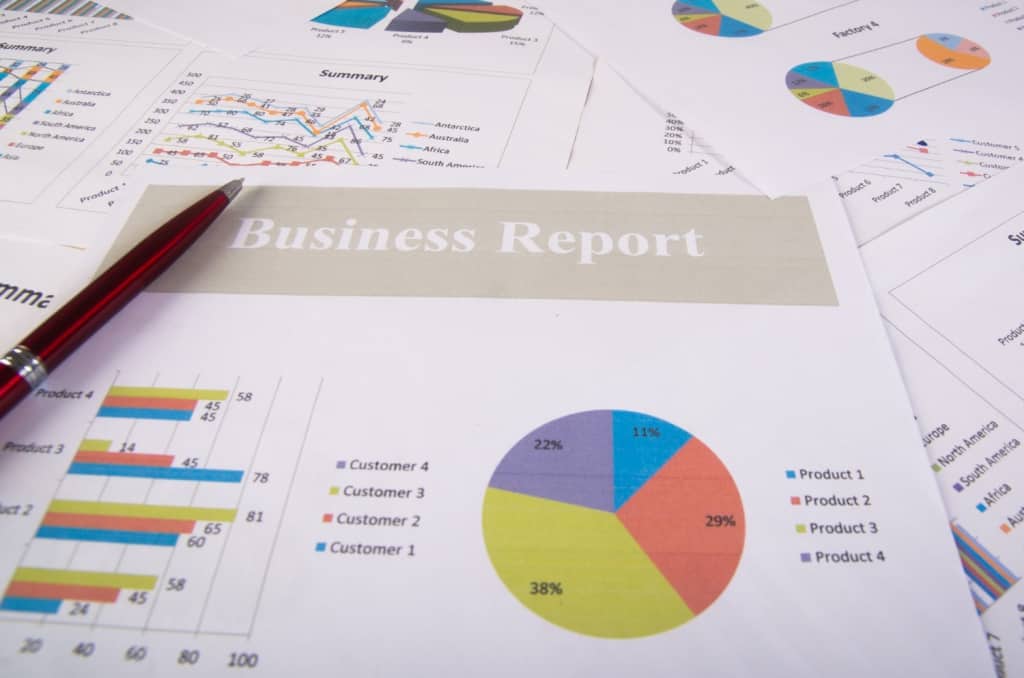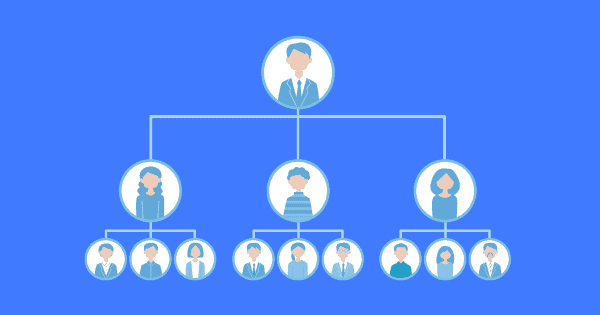Whether you’re managing projects, running a business, or working as a freelancer, the project plays a vital role in driving the growth of your business model. It offers a structured and systematic way to assess project performance, pinpoint areas that need improvement, and achieve optimal outcomes.
In this blog post, we’ll delve into project evaluation, discover its definition, benefits, key components, types, project evaluation examples, post-evaluation reporting, and create a project evaluation process.
Let’s explore how project evaluation can take your business toward new heights.
目錄
更好參與的技巧
什麼是項目評估?
Project evaluation is the assessment of a project’s performance, effectiveness, and outcomes. 它涉及數據來查看項目是否分析其目標並滿足成功標準。
項目評估 不僅僅是衡量產出和可交付成果; 它檢查項目產生的總體影響和價值。
By learning from what worked and didn’t, organizations can improve their planning and make changes to get even better results next time. It’s like taking a step back to see the bigger picture and figure out how to make things even more successful.
項目評估的好處
項目評估提供了有助於組織成功和發展的幾個關鍵優勢,包括:
- 它改善了決策: 它幫助組織評估項目績效,確定需要改進的領域,並了解導致成功或失敗的因素。 這樣他們就可以在資源分配、項目優先級和戰略規劃方面做出更明智的決策。
- 它提高了項目績效: 通過項目評估,組織可以識別其項目的優勢和劣勢。 這使他們能夠實施糾正措施來改善項目成果。
- 它有助於降低風險: 通過定期評估項目進度,組織可以識別潛在風險並採取解決方案,以減少項目延誤、預算超支和其他意外問題的可能性。
- 它促進 連續的提高: 通過分析項目失敗,組織可以完善其項目管理實踐,這種迭代的改進方法可以推動創新、效率和整體項目的成功。
- 它提高了利益相關者的參與度和滿意度: Evaluating outcomes and gathering stakeholders’ feedback enables organizations to understand their needs, expectations, and satisfaction levels.
- 它促進透明度: 評估結果可以傳達給利益相關者,展示透明度並建立信任。 結果提供了客觀的項目績效評估,確保項目與戰略目標保持一致並有效利用資源。

項目評估的關鍵組成部分
1/ Clear Objectives and Criteria:
Project evaluation begins with establishing clear objectives and criteria for measuring success. These objectives and criteria provide a framework for evaluation and ensure alignment with the project’s goals.
以下是一些專案評估計劃範例和問題,有助於定義明確的目標和標準:
定義明確目標的問題:
- 我們希望通過這個項目實現哪些具體目標?
- 我們的目標是什麼?
- 我們如何量化該項目的成功?
- 在給定的資源和時間範圍內,目標是否現實且可以實現?
- Are the objectives aligned with the organization’s strategic priorities?
評估標準示例:
- 成本效益: 評估項目是否在分配的預算內完成並物有所值。
- 時間表: 評估項目是否在計劃的時間內完成並達到里程碑。
- 質量: 檢查項目可交付成果和成果是否符合預定的質量標準。
- 利益相關者滿意度: Gather feedback from stakeholders to gauge their satisfaction level with the project’s results.
- 影響: Measuring the project’s broader impact on the organization, customers, and community.
2/ Data Collection and Analysis:
有效的項目評估依賴於收集相關數據來評估項目績效。 這包括通過調查、訪談、觀察和文件分析等各種方法收集定量和定性數據。
The collected data is then analyzed to gain insights into the project’s strengths, weaknesses, and overall performance. Here are some example questions when preparing to collect and analyze data:
- What specific data needs to be collected to evaluate the project’s performance?
- 將採用什麼方法和工具來收集所需的數據(例如調查、訪談、觀察、文件分析)?
- 需要收集數據的主要利益相關者是誰?
- 如何構建和組織數據收集過程以確保准確性和完整性?
3/ Performance Measurement:
Performance measurement involves assessing the project’s progress, outputs, and outcomes about the established objectives and criteria. It includes tracking key performance indicators (KPIs) and evaluating the project’s adherence to schedules, budgets, quality standards, and stakeholder requirements.
4/ Stakeholder Engagement:
利益相關者是直接或間接受項目影響或對其結果有重大利益的個人或團體。 他們可以包括項目發起人、團隊成員、最終用戶、客戶、社區成員和其他相關方。
讓利益相關者參與項目評估過程意味著讓他們參與並尋求他們的觀點、反饋和見解。 通過讓利益相關者參與,考慮他們的不同觀點和經驗,確保更全面的評估。
5/ Reporting and Communication:
項目評估的最後一個關鍵組成部分是評估結果的報告和溝通。 這涉及準備一份全面的評估報告,其中提出調查結果、結論和建議。
Effective communication of evaluation results ensures that stakeholders are informed about the project’s performance, lessons learned, and potential areas for improvement.

項目評估的類型
項目評估一般有四種主要類型:
#1 – Performance Evaluation:
這種類型的評估側重於評估項目的績效是否遵守 項目計劃、時間表、預算、 質量標準.
它檢查項目是否實現其目標、交付預期產出以及有效利用資源。
#2 – Outcomes Evaluation:
結果評估評估項目更廣泛的影響和結果。 它著眼於眼前的產出,並審查項目產生的長期成果和效益。
此評估類型考慮項目是否已實現其目標 期望的目標, 創建 積極的變化,並做出了貢獻 預期影響.
#3 – Process Evaluation:
過程評估檢查項目實施過程的有效性和效率。 它評估項目管理 策略, 方法和 方法 用於執行項目。
這種評估類型側重於確定項目規劃、執行、協調和溝通方面需要改進的領域。
#4 – Impact Evaluation:
Impact evaluation goes even further than outcomes evaluation and aims to determine the project’s 因果關係 與觀察到的變化或影響。
它旨在了解項目在多大程度上可歸因於所取得的成果和影響,同時考慮外部因素和潛在的替代解釋。
*注意: These types of evaluation can be combined or tailored to suit the project’s specific needs and context.
項目評估實例
不同項目評估示例如下:
#1 – Performance Evaluation
A construction project aims to complete a building within a specific timeframe and budget. Performance evaluation would assess the project’s progress, adherence to the construction schedule, quality of workmanship, and utilization of resources.
| 元件 | 測量/指示器 | 計劃 | 脊椎側彎處理的精實標準 | Variance |
| 施工進度 | 取得的里程碑 | [計劃的里程碑] | [實際里程碑] | [天數差異] |
| 做工質量 | 現場檢查 | [計劃檢查] | 【實際檢查】 | [計數差異] |
| 資源利用率 | 預算利用 | [計劃預算] | [實際費用] | [金額差異] |
#2 – Outcomes Evaluation
一個非營利組織實施了一個旨在提高弱勢社區識字率的社區發展項目。 結果評估將涉及評估識字水平、入學率和社區參與。
| 元件 | 測量/指示器 | 預干預 | 干預後 | 變化/影響 |
| 識字水平 | 閱讀評估 | 【預評估分數】 | [後評估分數] | [分數變化] |
| 學校出勤率 | 考勤記錄 | [干預前出席] | [干預後出席] | [出席人數變化] |
| 社區參與 | 調查或反饋 | 【干預前反饋】 | 【干預後反饋】 | [參與度變化] |
#3 – Process Evaluation – Project Evaluation Examples
An IT project involves the implementation of a new software system across a company’s departments. Process evaluation would examine the project’s implementation processes and activities.
| 元件 | 測量/指示器 | 計劃 | 脊椎側彎處理的精實標準 | Variance |
| 項目計劃 | 計劃遵守情況 | [計劃遵守] | 【實際遵守情況】 | [百分比差異] |
| 傳播學 | 團隊成員的反饋 | [計劃反饋] | 【實際反饋】 | [計數差異] |
| 技術培訓 | 培訓課程評估 | [計劃評估] | 【實際評價】 | [評級差異] |
| 變更管理 | 改變採用率 | [計劃採用] | 【實際採用】 | [百分比差異] |
#4 – Impact Evaluation
A public health initiative aims to reduce the prevalence of a specific disease in a targeted population. Impact evaluation would assess the project’s contribution to the reduction of disease rates and improvements in community health outcomes.
| 元件 | 測量/指示器 | 預干預 | 干預後 | 影響性 |
| 疾病患病率 | 健康記錄 | [干預前患病率] | [干預後患病率] | [患病率變化] |
| 社區健康成果 | 調查或評估 | [干預前結果] | [干預後結果] | [結果的變化] |

逐步創建項目評估
以下是幫助您創建項目評估的分步指南:
1/ Define the Purpose and Objectives:
- 明確說明評估的目的,例如項目績效或衡量結果。
- Establish specific objectives that align with the evaluation’s purpose, focusing on what you aim to achieve.
2/ Identify Evaluation Criteria and Indicators:
- 確定項目的評估標準。 這些可以包括性能、質量、成本、進度遵守和利益相關者滿意度。
- 為每個標准定義可衡量的指標,以方便數據收集和分析。
3/ Plan Data Collection Methods:
- 確定收集數據的方法和工具,例如調查、訪談、觀察、文檔分析或現有數據源。
- 設計調查問卷、訪談指南、觀察清單或其他工具來收集必要的數據。 確保它們清晰、簡潔,並專注於收集相關信息。
4/ 收集數據:
- 實施計劃的數據收集方法並收集必要的信息。 確保數據收集一致且準確,以獲得可靠的結果。
- 考慮數據收集的適當樣本量和目標利益相關者。
5/ Analyze Data:
收集數據後,對其進行分析以獲得有意義的見解。 您可以使用工具和技術來解釋數據並識別模式、趨勢和關鍵發現。 確保分析符合評估標準和目標。
6/ Draw Conclusions and Make Recommendations:
- Based on the evaluation outcomes, conclude the project’s performance.
- 提出可行的改進建議,強調提高項目有效性的特定領域或策略。
- 準備一份綜合報告,介紹評估過程、調查結果、結論和建議。
7/ Communicate and Share Results:
- 與相關利益相關者和決策者分享評估結果。
- 使用調查結果和建議為未來的項目規劃、決策和持續改進提供信息。
事後評估(報告)
如果您已經完成了項目評估,那麼就需要提交一份後續報告來全面概述評估過程、評估結果以及對項目的影響。

以下是評估後報告需要牢記的要點:
- 提供評估的簡明摘要,包括其目的、主要發現和建議。
- 詳細說明評估方法,包括數據收集方法、工具和所使用的技術。
- 介紹評估的主要發現和結果。
- 突出顯著的成就、成功和需要改進的領域。
- 討論評估結果和建議對項目規劃、決策和資源分配的影響。
項目評估模板
Here’s an overall project evaluation templates. You can customize it based on your specific project and evaluation needs:
| 簡介: – Project Overview: […] – Evaluation Purpose: [...] 評價標準: 數據收集與分析: 評估組成部分: b. 結果評估: C。 過程評估: d. 利益相關者參與: e. 影響評估: 報告和建議: 結論: |
關鍵要點
項目評估是一個關鍵過程,有助於評估項目的績效、成果和有效性。 它提供了有關哪些方面行之有效、需要改進的領域以及經驗教訓的寶貴信息。
別忘了 啊哈幻燈片 在評估過程中發揮重要作用。 我們提供 預製模板 - 互動功能, which can be utilized to collect data, insights and engage stakeholders! Let’s explore!
常見問題
項目評估有哪四種類型?
績效評估、結果評估、過程評估和影響評估。
項目評估的步驟是什麼?
以下步驟可幫助您創建項目評估:
定義目的和目標
確定評估標準和指標
計劃數據收集方法
收集數據並分析數據
得出結論並提出建議
溝通和分享結果
項目管理評價的5個要素是什麼?
數據收集與分析
績效衡量
利益相關者參與
報告與溝通









